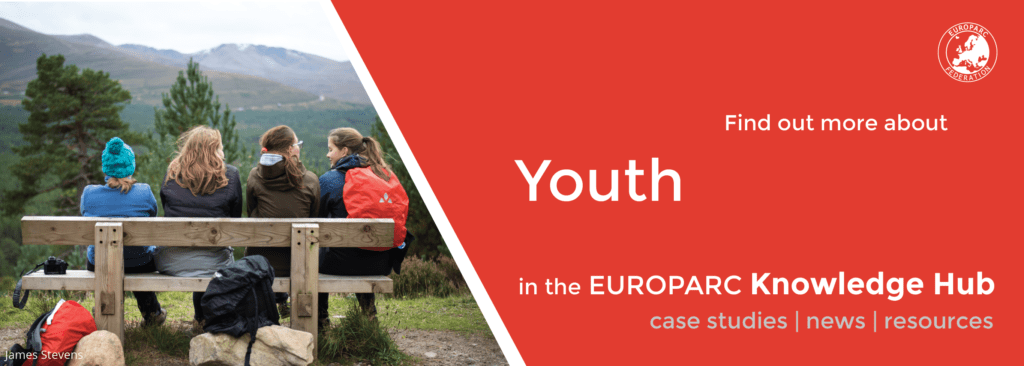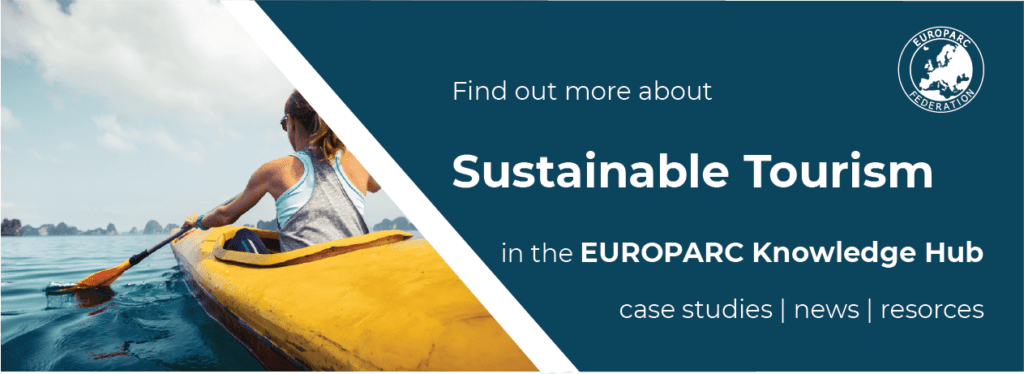Meet our new Youth Representative: Leonardo Cerno!
The EUROPARC Youth Representative is a co-opted member of the EUROPARC Council. They will provide support and bring extra insight on youth related matters relevant to the work of Protected Areas.
At the end of 2021, EUROPARC started to process of finding a new youth representative. We received many applications from motivated young (<30) people all over Europe. All applications were then assessed by members of our Council and short listed candidates were interviewed last week. Now, we are happy to announce that Leonardo Cerno (27) from Italy will be the new Youth Representative until October 2024!
Who is Leonardo?
Leonardo is no stranger to EUROPARC. In fact, we asked him some questions in 2019 for the European Youth Week. He has lived on the border of the Italian Julian Prealps Nature Park his entire live. From 2007, he was active in the Park’s Junior Ranger Programme, both as a member and mentor. Leonardo also supported the implementation of the EUROPARC Youth Manifesto through the creation of the Youth Advisory Board.
His many years of experience have allowed him to develop a big network of young people around Europe, both in and outside of Protected Areas. Apart from being active in the youth groups of Prealpi Giulie, Leonardo has managed to turn his passion for nature into his job. Currently, he works as self-employed nature guide and as a park guide in the Julian Prealps.
All these things made the council decide that Leonardo would be the right person for the position.
As the Youth Representative at the EUROPARC Council, he wants to make sure other young people in Europe get the same great opportunities he had while growing up. He states: “Getting this news has really been a great moment for me. I grew up through EUROPARC youth programs and they gave a lot to me, I think they actually made a part of whom I am today. So now I’m more than pleased to get the opportunity to give back some of the knowledge and experience I gathered during these years.
I truly hope that every young person across Europe can get the same opportunities I had growing up, and I want to be part of the process of helping them to transform into something better.
I can’t wait to meet the members of the council and start working with them!”. Likewise, EUROPARC’s Council Members state:
We are happy Leonardo will be part of the EUROPARC Council. He’s a great example of the effectiveness of youth programmes in Protected Areas. We look forward to working together with him in the upcoming years.
The jury wants to thank all that applied for the position. All candidates showed commitment, interest and passion, which made the decision a hard one to make.
You are invited: Siggen Seminar 2022!
Bringing together Protected Area professionals to learn together, share experience and knowledge in various aspects of Protected Area management and innovate new ideas is at the heart of the EUROPARC Federation’s work. Thanks to the generous support of the Alfred Toepfer Stiftung, we offer annually to our members, the opportunity to join a high-level training for Protected Area professionals.
Siggen Seminar 2022
Nature Restoration in Europe: the Role of Protected Areas
We are very happy to invite our members to the first face to face Siggen Seminar since 2019! This year’s seminar will focus on nature restoration in Europe.
As clearly stated by the EU in the Green Deal and the Biodiversity Strategy to 2030, protecting the nature we have will not be enough to reverse biodiversity loss. A complementary ambitious effort is now needed on nature restoration.
Restoring ecosystems all over Europe will help to increase resilience and connectivity of ecosystems, mitigate and adapt to climate change and prevent and reduce the impacts of natural disasters. For this, the European Commission is developing a new, dedicated legislation, and the Bern Convention has recently approved targets for the restoration of natural ecosystems.
In this framework, what role should Protected Areas play? What is needed to make sure Protected Areas can effectively contribute to inspire and implement wide ecosystem restoration? How can Protected Areas contribute to improve connectivity and to reduce habitat fragmentation?
During this seminar we will investigate some of those aspects, looking also outside of Protected Areas, considering possible partnerships and cooperation with broader landscapes, to ensure benefits from restoration overcome Protected Areas boundaries. We will consider current policy developments, share good practices from across different countries and look at research needed and opportunities to finance restoration initiatives.
Please note this event is for EUROPARC members only.
Due to COVID-19 regulations, there is only limited space available. As such, your registration will have to be confirmed. We will close registrations on the 21st of February.
More information, as well as a detailed schedule will be provided in the upcoming weeks.
Logistics:
Arrival: Monday 28th March – afternoon
Seminar: Tuesday 29th – Wednesday 30th March
Departure: morning of Thursday 31st March
Please remember that you will be notified if you have been selected for the seminar. Do not book your transportation until you’ve received our confirmation.
If you have any questions do not hesitate to contact esther.bossink @ europarc.org.
COVID-19 Regulations
It is of utmost importance to us that this event can take place in a safe manner. Please note the current regulations to travel to Germany here, as well as the following Siggen Seminar Center access rules. Entry to the Seminar Centre is only possible for those that are
- fully vaccinated or recovered (2G)* – find here the list of approved vaccinations in Germany;
- have additionally completed a professionally performed rapid test (not older than 24 hours). This also applies to guests who have already received a booster vaccination.
Your second vaccination must have been received at least 14 days before arriving to Siggen and must not be older than 6 months upon arrival*. You must be able to present all proofs to the team of the seminar centre in Siggen upon arrival.
Mask (FFP2) are compulsory whilst unseated in closed rooms, as well as when moving around the premises.
*Please note, that in Germany the single-dose vaccine from Johnson&Johnson only counts as ‘fully vaccinated’ after two doses. More information here. To be considered ‘recovered’ in Germany means the positive test must be at least 28 days old, but no older then 90 days. More information here.
Any questions? Do not hesitate to contact esther.bossink @ europarc.org!
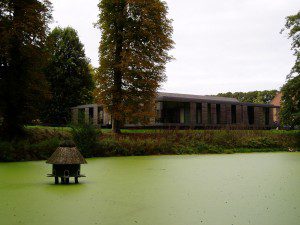
Siggen Seminar Estate © EUROPARC Federation
About Siggen Seminars and the Alfred Toepfer Stiftung
Bringing together Protected Area professionals to learn together, share experience and knowledge in various aspects of Protected Area management and innovate new ideas is at the heart of the EUROPARC Federation’s work.
With the enlightened generosity of the Alfred Toepfer Stiftung F.V.S. we have access, annually to their private seminar centre at Gut Siggen in North Germany, hugging the Baltic Sea coast. Alfred Toepfer Stiftung’s founder was also one of the Federation’s founders and played an important role in its growth and development.
How to get to the Siggen Seminar Center?
The Siggen Seminar Center belongs to the Alfred Toepfer Foundation and lies on the north-eastern coast of Germany in the county of Holstein. It is a 20 minute taxi ride from the nearest train station, Oldenburg (Holst), and a five-minute bike-ride to the nearest beach.
Please contact EUROPARC with any questions you might have and download the pdf Directions to Siggen to learn how you can easily reach it by plane, train or car.
Location: Gut Siggen Seminar Center 23777 Heringsdorf, Germany
Please remember that you will be notified if you have been selected for the seminar. Do not book your transportation until you’ve received our confirmation.
How much does it cost?
The annual Siggen seminar is FREE for members of the EUROPARC Federation (meals and accommodation included). Participants ONLY have to cover their own travel costs to and from the event.
3 new Parks join the European Charter for Sustainable Tourism!
Ligurian Alps Regional Nature Park. Statue of the Redeemer - Monte Saccarello © Gabriele Cristiani
The European Charter for Sustainable Tourism (ECST) is a methodology to support sustainable development around Protected Areas. In 2021 three new Parks joined the “Charter Network”.
Sustainable tourism is Good for Parks, Good for People!
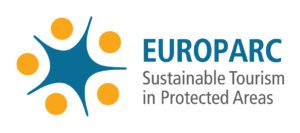
Logo of “The Charter”
Tourism is a booming business. It produces almost 5% of the world’s economic turnover, employs around 200 million people globally and is the fastest growing industry. Tourism is also one of the main economic drivers of Europe’s rural economies; directly and indirectly, it accounts for around 10% of European GDP and 20 million jobs. Protected Areas are drivers of tourism in rural areas, something that was only amplified during the COVID-19 pandemic. As such, it’s more important than we employ methods for sustainable tourism in our natural heritage. The ECST is a methodology that helps Parks and regional institutions create tourism that is good for Parks and good for people.
Three new members
Every year Parks around Europe start the process of joining this network of Sustainable Tourism experts. In 2021 we were happy to welcome three new Protected Areas:
Isola Pantelleria National Park
This National Park is located on the Island of “Isola”, situated in the Mediterranean Sea. Its location results in a unique mix of floara and fauna species. The whole area of the island has now become Charter Area. The National Park hosts a number of ecological and touristic highlights. The most famous is the “Venus Lake”, which has a brilliant blue colour. However, it’s not just natural wonders that make this island so interesting for tourists. Traditional agricultural practices and the art of dry stone walls are also included on the UNESCO List of Intangible Cultural Heritage of Humanity.
The decision to join the Charter fits in with overall aims of sustainable development of the National Park, and we are happy to welcome them and see this development grow.
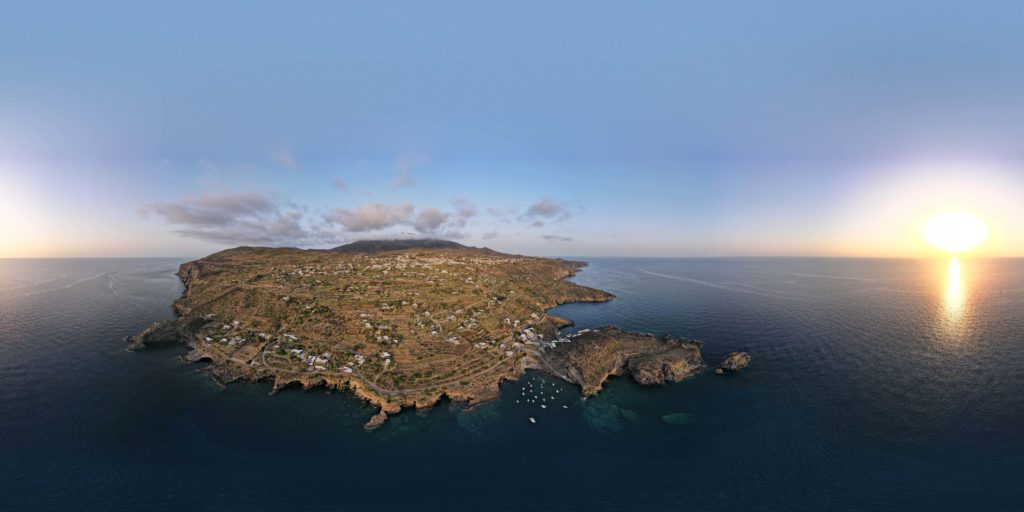
Isola Pantelleria National Park – Pantelleria Island © Clara Garsia
Ligurian Alps Regional Nature Park
The Natural Regional Park of the Ligurian Alpes is a Regional Natural Park – IUCN Category V. Specifically, within the park there are fifteen sites belonging to the Natura 2000 network: seven Special Protection Areas and eight Special Areas of Conservation. Although it offers many natural resources linked to outdoor activities like hiking, rafting, climbing and canyoning, the area’s annual visitors is limited. Through the Charter, the goals is to develop green tourism and support sustainable regional development, whilst involving a large group of stakeholders. The Park states:
For the Parco Naturale Regionale delle Alpi Liguri the European Charter for Sustainable Tourism is a great achievement.
“Local administrators, restaurant and hotel owners, companies, guides and associations have worked together for the same territory; the Charter is the recognition of this collective and community commitment and, from now on, it will be a compass to work on the path traced in cooperation with the Park guided by the same objective and with the cardinal points of the Charter to make a concrete community.”
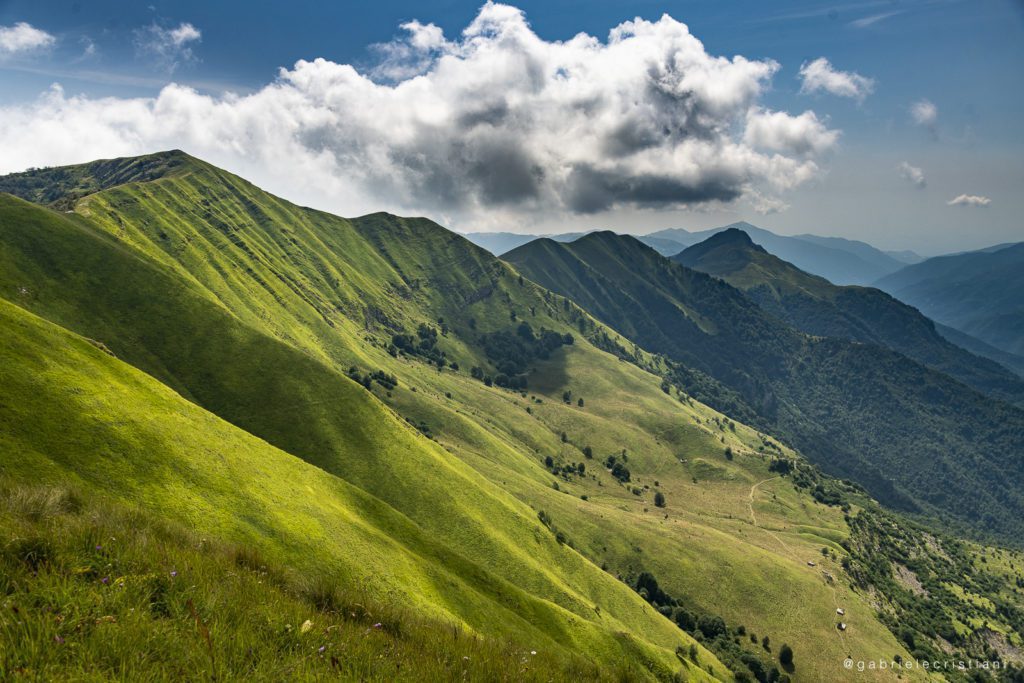
Ligurian Alps Regional Nature Park – Passo Pian Latte © Gabriele Cristiani
Vesuvio National Park
When visiting this Protected Area, you can feel the history that stretches back to the pre-Roman period. It’s an area, in which natural processes and human dynamics and settlements have always been tightly intertwined. The area includes touristic highlights such as the UNESCO World Heritages Sites of Pompei and Ercolano, a beautiful coastal belt and historic villas.
The National Park was established in 1995 and is listed under IUCN Category II. It encompasses over 1000 hectares of Forest Protection Reserve. Furthermore, together with the surrounding coastal belt and the Ville Vesuviane, the National Park is included in the Man and Bisophere (MaB) UNESECO Reserve “Somma Vesuvio e Miglio d’Oro”, established in 1997. The Park also includes Natura 2000 sites.
With so much to offer, the area is a hotspot for tourism. Especially the Great Volcanic Cone experiences a lot of visitors. In recent years, the National Park has taken considerate steps to create a more sustainable and high quality tourism, one of which is applying to become part of the Charter.
At EUROPARC, we are very happy to welcome them into our Sustainable Tourism Network and look forward to the future developments within these areas. Do you also want to become part of the Network? Then have a look at the application process here.
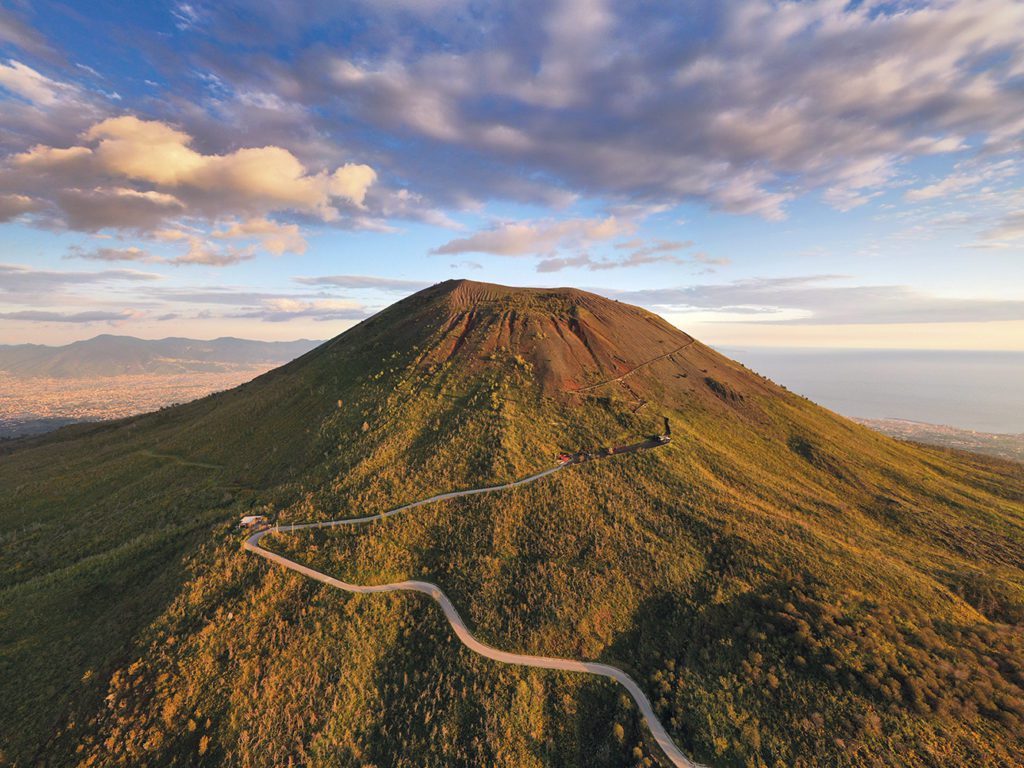
Vesuvio National Park – autumn sunset © Carlo Falanga
New podcast: Giving a voice to young people
EUROPARC Podcast: Voices from the Parks brings inspiring stories from across the network when you’re on the go. In this episode: Ainya Taylor and Carolina Chinese talk about the importance of involving young people in Protected Areas.
Who is speaking?

Ainya Taylor

Carolina Chinese
Ainya Taylor is 25 and lives in Inverness in the Scottish Highlands. She works in Community Justice Policy and is involved in the Cairngorm Youth Action Team (CYAT) in her spare time.
Carolina Chinese is an 18-years-old student from the North-East of Italy. She is a member of the Youth Advisory Board Man And Biosphere UNESCO Reserve “Italian Julian Alps”. With other youngsters, she works hard to involve peers and create activities and events that can improve the sense of belonging of young people to the Julian Alps valleys and mountains.
What are we talking about?
Both Ainya and Carolina are active in their Protected Areas through youth groups. These groups were created specifically to give young people a voice in these areas. They provide an opportunity for young people to speak up, advice and organise events that will keep these Parks attractive for other young people. As such, they are great examples of the EUROPARC Youth Manifesto put to work.
Cairngorms National Park and the Italian Julian Alps are both facing problems due to a lack of young people that want to stay and live in these areas. Ainya and Carolina and their peers are trying to change just that, by creating exciting opportunities for young people within the Protected Areas.
It’s important that National Areas look at how to appeal to young people, because there are so many things in these areas that don’t exist in other places.
Says Ainya. According to her, it’s time Protected Areas start flipping the narrative, and promote all the things that make these rural places so special.
We also touched upon bigger societal topics like Climate Change and we hear form Carolina how the Youth Advisory Board is spreading regional awareness on the topic.
In other words, loads of inspiration to be found in our new episode! You can listen to it here, or find our podcasts on Anchor.fm channel and all major podcast platforms!
